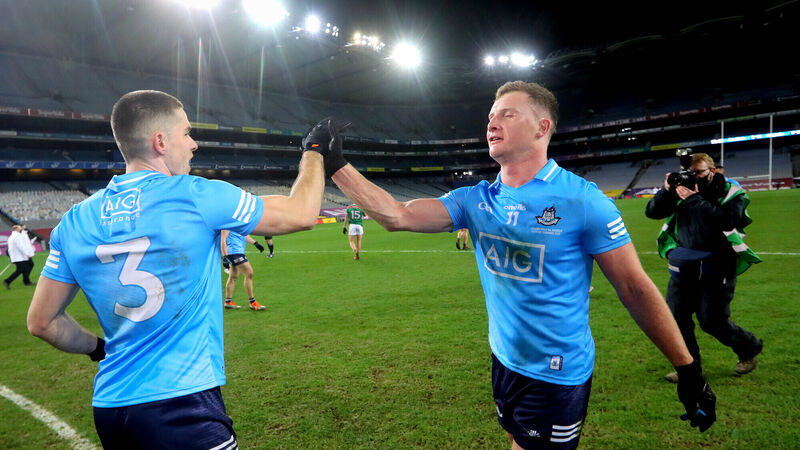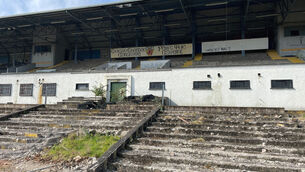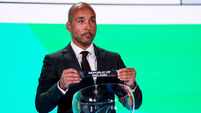Eimear Ryan: How quickly admired underdogs become resented superpowers

Dublin’s David Byrne and Ciaran Kilkenny celebrate after the defeating Mayo to win a sixth All-Ireland SFC in a row. Picture: INPHO/Ryan Byrne
AN rud is annamh is iontach. A uniquely Irish phrase, not just in language, but in attitude. We’re a post-colonial nation, and in many ways we don’t expect — or even, in a stubborn way, want — too many nice things. Going without will make the having, whenever it comes along, all the sweeter. That’s the reasoning anyway.
It’s why culturally we love when teams end famines and are deeply suspicious of anything more than a three in a row.
Is there any joy in dominance? Dublin football fans would say yes, plenty. Personally, I have never followed a team at either club or county level that won all round them. Likewise, none of our national teams could be accused of hogging any trophies. Maybe I just don’t have it in me — that steely winning instinct, that competitive edge.
Not to be a Goldilocks of All-Irelands, but Tipp’s three wins over the course of the last decade felt just right to me. I’d only be starting to wonder if we were losing our relevance when another title would come along to quell my anxiety.
In seasons past, I had dared hope for Mayo, but not this time. Part of it was the semi-final: Tipp’s numerous goal chances and the knowledge that Dublin would exploit any weakness at the back. Dean Rock’s goal after 13 seconds confirmed this hunch. On Twitter, Malachy Clerkin observed that in four of Mayo’s six All-Ireland finals since 2012, the opposition have opened their scoring with a goal. It’s a damning trend.
On Sunday afternoon, Dublin did the double, bolstering their six in a row with a four in a row, as the ladies football team beat Cork by five points.
Watching the two games play out, it was striking to note the similarity of approach in both Dublin teams: A methodology, a calmness, an athleticism, almost an inevitability to the way they play.
“Of course,” you found yourself murmuring as Carla Rowe slotted away her penalty, or as Con O’Callaghan boxed in a goal. “Of course.” This is what they do. Culture, I think it’s called.
There is something in the water in Dublin and yes, there is also something — many somethings — in the coffers. It’s not the players’ fault, of course, that they operate as essentially a semi-pro outfit.
On the contrary, it’s what most inter-county players would consider ideal: To not want for anything and consequently to be able to focus solely on their game. The privilege of having money, in sport as in life, is that you rarely need to think about it that much.
Investment works. We see the truth of that in the Limerick hurlers, and the dividends of their academy, as much as in the Dublin footballers — albeit at an earlier stage in their ascendancy. AIG’s approach, particularly their #EffortIsEqual campaign, is commendable; their funding of hurling, football, camogie, and ladies football in the capital creates a sense of unity and equality that is a model for other counties and their sponsors. Everything that you hear from the Dublin women’s camps indicates that they are well served in terms of facilities, too. The fact that the players would not by necessity have to leave their county for work or study also means that lack of expenses, a constant stressor in many female inter-county teams, is not a factor for the Dublin women. All of this is as it should be; all of it is positive.
Would Dublin still win all round them if differences in funding wasn’t a factor? Quite possibly— they’re an incredible bunch of players — but maybe their dominance wouldn’t give the rest of us such a sinking feeling.
And other advantages, both subtle and unchangeable, would remain: Their home venue, their huge population, and their talent pool of experienced professionals to serve as volunteers, backroom personnel, and consultants.
Strangely, the dominance of the Dublin ladies footballers does not seem as much of a cause for concern for the sport as a whole, perhaps because of the Cork six in a row and five in a row that preceded it. I remember watching Pat Comer’s excellent documentary Blues Sisters from 2017, which tracked the Dublin women as they came back from losing three finals on the trot to win their first title since 2010. It was easy to be thrilled for them, in part because they are a stylish and likeable team, but also because they had suffered.
Likewise, when the Dublin men’s team won in 2011, they were bridging a gap of 16 years. It was nothing compared to Mayo’s famine, of course, but still substantial. It tells us something about the nature of power — how quickly admired underdogs become resented superpowers. Some of Dublin’s most talented young players, like Con O’Callaghan and Brian Fenton, have never experienced a Championship defeat. Is there value to a player’s development in losing every now and then, in that it provides wisdom, perspective, motivation? Or is it better to always win, in that it confers a near-unbreachable self-confidence and belief? We have never been able to test this hypothesis until now.
OK, yes, there have been dynasties before — the Cork ladies, the Kilkenny hurlers, and the Pat Spillane generation of Kerry footballers. But as frustrating as those teams’ winning streaks were to other counties, there was also mystery and a touch of romance to their streaks that even their detractors acknowledged. “How do they do it? What’s their secret?”
It’s this mystery that is lacking from Dublin. It is not surprising to anyone that professional standards and a large talent pool results in success.
It’s logical, not magical.
I asked my dad what it was like to live through the early 60s, when Tipp won four All-Irelands in five years. “Well now, that was a bit different,” he said, citing Tipp’s Munster final loss to Waterford in 1963, which interrupted the streak and proved them fallible. And I guess that is how you find joy in dominance — thinking of the times when the team wavered or failed, only to come back stronger.
The low points are how we orient ourselves in victory; how we see the triumphs in sharper relief. There’s a crack in everything, and all that. Right now, however, it’s hard to see the chinks in Dublin’s armour.








